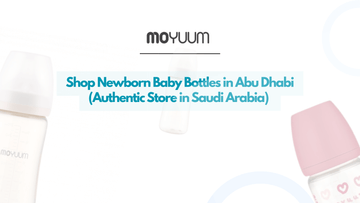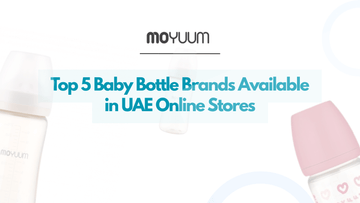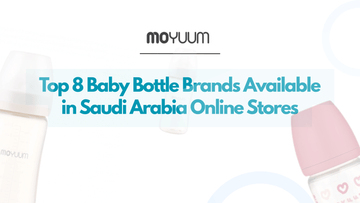Have you ever worried whether the Moyuum bottle in your hand is real or fake? With the rise in counterfeit baby bottles, it’s a concern many moms now face. Fake Moyuum bottles can pose serious health risks to your little one, and that’s not a risk any parent should take.
In this guide, we’ll show how moms can verify Moyuum bottles using trusted steps, helping ensure infant safety and peace of mind when avoiding fake products.

Is Your Moyuum Bottle Fake?
Worried you might be using a fake Moyuum bottle without realizing it? There are clear signs of fake Moyuum bottles that every mom should watch for.
Knowing how to identify counterfeit products is your first defense in ensuring consumer safety. From fake packaging to small design flaws, counterfeit Moyuum bottles often show visual inconsistencies.
In contrast, genuine bottles include packaging markers and QR verification. These are the clues that help you spot danger before it reaches your baby.
Step 1: Check the Packaging – Genuine Moyuum Bottles vs Imitations

Before opening the bottle, take a close look at the outer box. There are clear Moyuum bottle packaging differences that can help you spot a fake instantly.
Genuine Moyuum bottles have ivory-colored, clearly printed boxes, while fake bottles contain spelling errors and blurred text that may look slightly “off.”
Here’s what to check:
1. Color and Material
-
Genuine Moyuum bottles have an ivory color with a soft matte finish.
-
Fakes often appear white or overly glossy, which may feel cheap.
2. Print and Font Clarity

-
Authentic packaging features clean, sharp fonts with no smudging.
-
Counterfeit label signs include blurred text, inconsistent font sizes, and typos.
3. Structural Details
-
Look for elliptical holes in the inner tray that holds the bottle in place.
-
Fakes may skip these details entirely or have poorly aligned cutouts.
4. Labeling and Seals

-
Genuine bottles have a properly sealed expiration label with batch information.
-
Fake ones may show crooked labels or missing expiry details.
When in doubt, compare your bottle to official visuals on the Moyuum website. These small clues can help you avoid buying an imitation that could risk your baby’s safety.
Step 2: Inspect the Nipple – Small Details That Reveal the Truth

The Moyuum bottle nipple might seem minor, but it holds key signs of Moyuum nipple authenticity. To protect your child, look closely, real nipples display size numbers and 'MADE IN KOREA', while fake nipples contain spelling errors and extra slots that could pose serious safety risks if chewed.
Here’s how to check:
1. Check the Text and Country Marking
-
Authentic nipples are marked with ‘MADE IN KOREA’ clearly molded into the base.
-
Fakes may have typos like ‘MEDA IN KOREA’, poor spacing, or faint impressions.
2. Look for the Size Marking on Nipple
-
Genuine nipples include a visible size number (e.g., 1, 2, 3) indicating flow rate.
-
Fake nipple signs include missing or inconsistent size markings.
3. Count the Slots
-
A critical test: real Moyuum nipples have 3 slots.
-
Fakes usually contain 4 slots, which alters the milk flow and can cause choking.
Why It Matters:
A fake nipple made of low-grade silicone can tear easily. If your baby chews on it, they might ingest particles or experience leakage, both of which compromise feeding hygiene and infant safety.
If you're unsure, compare with an original from an authorized Moyuum seller. These tiny details make all the difference.
Step 3: Examine the Bottle Cap – Look for Logo, Hole Size, and Grooves
The Moyuum cap might seem like just a lid, but it carries several subtle Moyuum bottle cap features that help confirm authenticity.
Authentic caps have deeper holes and groove markings, while fake caps show shallow holes and faint logos that can be easy to miss unless you know what to feel for.
Here’s what to check:
1. Embossed Logo Check
-
Real vs fake bottle cap comparison starts with the logo.
-
Authentic caps have a crisp, clean embossed logo that's centered and raised.
-
Counterfeit cap identifiers include misaligned logos, uneven depth, or barely visible marks.
2. Groove and Hole Design
-
Flip the cap and look for the drainage groove inside—it should be clearly molded.
-
Real caps have a deep central hole that’s uniform in size.
-
Fakes usually show shallow holes, often rough around the edges or off-center.
3. Tactile Feel
-
Run your finger along the rim. Genuine caps feel smooth but firm, with evenly spaced grooves.
-
Fake caps may feel flimsy, uneven, or too lightweight.
Step 4: Scan the QR Code – Confirm Moyuum Authenticity Digitally
When in doubt, scan the Moyuum QR code to get instant confirmation. This step takes seconds but can save you from using a counterfeit product.
Scanning the QR code reveals manufacturer data, batch info, and verifies if the bottle is registered in the product database. Here’s how to do it:
1. Choose a Trusted App
-
Use the Icheck app or Barcode Scanner from a verified app store.
-
These apps allow you to verify authenticity via barcode quickly and securely.
2. Scan the Code on the Bottle or Packaging
-
The QR code should be printed clearly and placed on the side or bottom of the packaging.
-
A successful scan reveals manufacturer data, product specs, and links to Moyuum’s official records.
3. Watch Out for Red Flags
-
If the QR code fails, or leads to a broken or generic page, it indicates a counterfeit item.
-
Common issues with fake codes include blurry print, duplicate scans across different bottles, or codes that don’t match the packaging.
Where to Buy Genuine Moyuum Bottles in UAE or Saudi Arab
If you're wondering where to buy original Moyuum bottles, it’s essential to stick with trusted baby product stores to ensure a safe baby bottle purchase.
Moms should buy from trusted retailers who specialize in verified baby goods to avoid the risk of counterfeits. One reliable source is MOYUUM.SHOP, an official verified retailer known for providing genuine baby product chains and quality service across UAE and Saudi Arabia. They directly source from the manufacturer. Avoid shady online marketplaces or lesser-known vendors where fake listings are common.
Buying from a reputable chain not only gives you peace of mind but often includes warranty options, clear return policies, and helpful customer support.
Frequently Asked Questions
How can I identify fake Moyuum bottles?
You can identify fake Moyuum bottles by carefully examining the packaging, nipple, and bottle bottom. Authentic Moyuum bottles come in an ivory white box with clearly printed text and images, a sealed label with rounded edges, and accurate expiration details. Counterfeit versions usually have faded or blurry printing, spelling mistakes, and no proper seal. Genuine nipples are marked with a size number and correctly labeled “MADE IN KOREA,” whereas fake ones may say “MEDA IN KOREA” and lack size markings. Additionally, the bottom of the genuine Moyuum box contains two elliptical holes, while counterfeit boxes have two circular holes.
What should I check on the Moyuum bottle cap to verify authenticity?
To verify the authenticity of a Moyuum bottle, examine the bottle cap closely. A genuine Moyuum cap will have a deeper, more defined central hole, a clear Moyuum logo embossed or printed on the surface, and distinct drainage grooves marked with numerical symbols. In contrast, counterfeit caps typically have a smaller center hole, faint or missing logos, and lack groove markings, making them easy to spot once you know what to look for.
My Moyuum bottle’s QR code isn’t scanning—does that mean it’s fake?
Yes, if your Moyuum bottle's QR code doesn’t scan or fails to display product information, it is likely a counterfeit product. Authentic Moyuum bottles include a scannable QR or barcode that, when checked using apps like iCheck or Barcode Scanner, will reveal product details such as the product name, manufacturer, item code, and expiration date. If the scan returns no data or fails completely, it's a strong sign that the bottle is not genuine.
Is it safe to use fake Moyuum bottles?
No, using counterfeit Moyuum bottles is not safe and poses serious health risks to your baby. Fake bottles are often made with unregulated or low-quality plastics that may release harmful chemicals. They may also feature poorly designed nipples that are prone to breaking or tearing, increasing the risk of choking.





